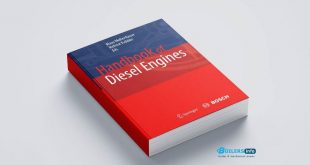An Introduction to Modern Vehicle Design
Modern vehicle design is a multidisciplinary field that integrates engineering, aesthetics, ergonomics, and sustainability to create vehicles that meet consumer demands and regulatory requirements. It encompasses every aspect of a vehicle’s creation, from conceptual design to production, focusing on functionality, safety, efficiency, and environmental impact. This comprehensive overview highlights the key principles, processes, and technologies that define contemporary vehicle design.
The Evolution of Vehicle Design
The design of vehicles has evolved significantly over the decades. Early designs were centered on mechanical functionality and basic mobility, often disregarding aerodynamics, fuel efficiency, or user comfort. Today, advancements in materials science, computational modeling, and manufacturing techniques allow designers to create vehicles that are lightweight, fuel-efficient, and highly functional. Consumer preferences and global environmental regulations also play a critical role in shaping modern vehicle designs, driving the development of electric, hybrid, and autonomous vehicles.

Key Principles of Modern Vehicle Design
1. Aerodynamics
Aerodynamics is a cornerstone of modern vehicle design, significantly impacting fuel efficiency, performance, and noise reduction. Designers use wind tunnel testing and computational fluid dynamics (CFD) to optimize a vehicle’s shape, ensuring minimal drag and improved stability. For instance, electric vehicles often feature sleek, streamlined exteriors to maximize energy efficiency.
2. Structural Integrity and Safety
Safety is a paramount concern in vehicle design. Modern vehicles incorporate crumple zones, reinforced passenger cabins, and advanced materials like high-strength steel and carbon fiber composites to enhance crash resistance. Passive safety features, such as airbags and seatbelts, work in conjunction with active safety systems like electronic stability control and autonomous emergency braking.
3. Ergonomics and Comfort
User-centric design is essential to creating vehicles that provide a comfortable driving experience. Interior layouts are optimized for ease of use, visibility, and accessibility, often incorporating adjustable seats, intuitive controls, and advanced infotainment systems. Noise, vibration, and harshness (NVH) reduction techniques further enhance the comfort of modern vehicles.
4. Sustainability
Sustainability is an integral part of modern vehicle design. Automakers are increasingly using eco-friendly materials, such as recycled plastics and organic composites, while striving to reduce the environmental impact of manufacturing processes. Electric and hybrid powertrains are central to achieving lower emissions and aligning with global climate goals.
The Design Process
Modern vehicle design involves several iterative steps:
1. Conceptualization
Designers start with sketches and digital models to visualize the vehicle’s appearance and functionality. Conceptual designs balance aesthetics, practicality, and brand identity while considering the intended market segment.
2. Computer-Aided Design (CAD)
CAD software is used to create detailed 3D models of the vehicle, allowing designers to simulate and analyze its structural, aerodynamic, and ergonomic characteristics.
3. Prototyping and Testing
Physical prototypes are built for testing and validation. These prototypes undergo rigorous tests for safety, durability, and performance, ensuring the design meets regulatory standards and consumer expectations.
4. Manufacturing
Once the design is finalized, it is sent for production. Modern manufacturing techniques, such as additive manufacturing and automated assembly lines, ensure precision and efficiency in building vehicles.
Key Technologies in Modern Vehicle Design
1. Lightweight Materials
Lightweight materials like aluminum, magnesium, and carbon fiber composites are widely used to reduce vehicle weight, improving fuel efficiency and handling without compromising safety.
2. Advanced Powertrains
Modern vehicle designs incorporate advanced powertrains, including electric, hybrid, and hydrogen fuel cell systems, to meet stricter emissions regulations and reduce reliance on fossil fuels.
3. Connectivity and Automation
Connected vehicles equipped with smart technologies, such as IoT sensors and vehicle-to-everything (V2X) communication, are becoming the norm. Autonomous driving technologies, supported by AI and machine learning, are also transforming how vehicles are designed and used.
4. Digital Twins and Simulation
Digital twin technology allows designers to create virtual replicas of vehicles to test and optimize performance in a simulated environment. This reduces development time and cost while improving design accuracy.
Trends in Modern Vehicle Design
1. Electric Vehicle Design
Electric vehicles (EVs) have unique design requirements, such as space optimization for batteries and motor cooling systems. Designers also focus on aerodynamics to extend driving range and improve energy efficiency.
2. Autonomous Vehicles
Autonomous vehicle design prioritizes sensor integration, redundant systems for safety, and innovative interior layouts to accommodate passengers who are not actively driving.
3. Sustainability
Sustainability trends include using biodegradable materials, designing for recyclability, and adopting circular economy principles in manufacturing processes.
4. Personalization
Consumers are increasingly seeking vehicles tailored to their preferences. Automakers offer customizable interiors, exterior finishes, and infotainment options to enhance user satisfaction.
Use Cases in Modern Vehicle Design
- Urban Mobility Solutions: Compact electric cars with enhanced maneuverability and reduced emissions are ideal for city commuting.
- Luxury Vehicles: Premium models feature cutting-edge technologies, superior comfort, and high-performance powertrains to cater to affluent customers.
- Commercial Vehicles: Trucks and vans are designed with durability, efficiency, and load optimization to meet the demands of logistics and transportation industries.
- Performance Cars: Sports cars incorporate lightweight materials, advanced aerodynamics, and high-powered engines for optimal speed and handling.
Conclusion
Modern vehicle design is a complex and dynamic field that integrates science, engineering, and creativity to address the evolving needs of consumers and the environment. With advancements in technology and a focus on sustainability, the future of vehicle design promises to deliver safer, more efficient, and innovative transportation solutions. Automakers are not just designing vehicles; they are shaping the future of mobility itself.
 Boilersinfo Boiler and Mechanical Power Digital Library
Boilersinfo Boiler and Mechanical Power Digital Library





